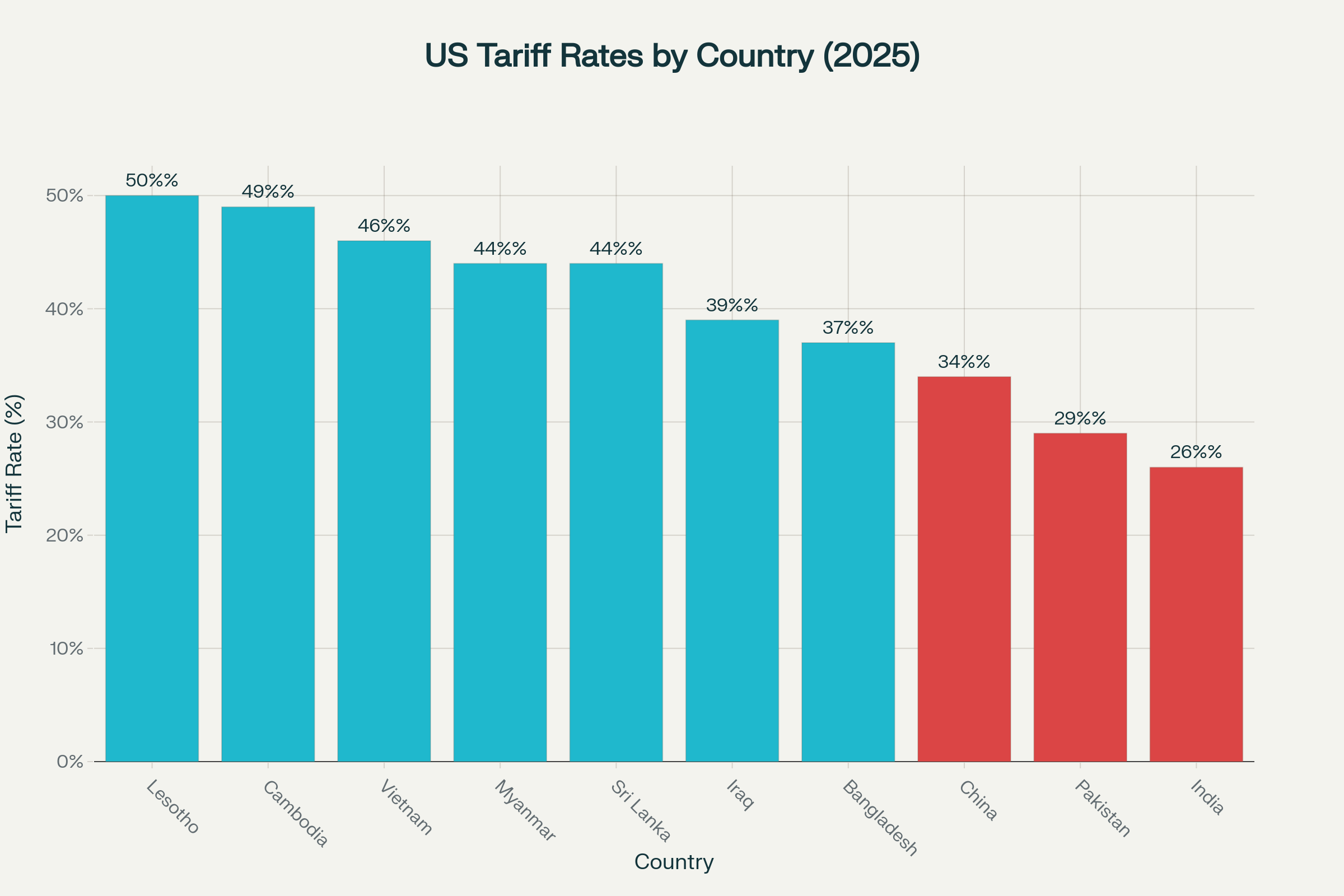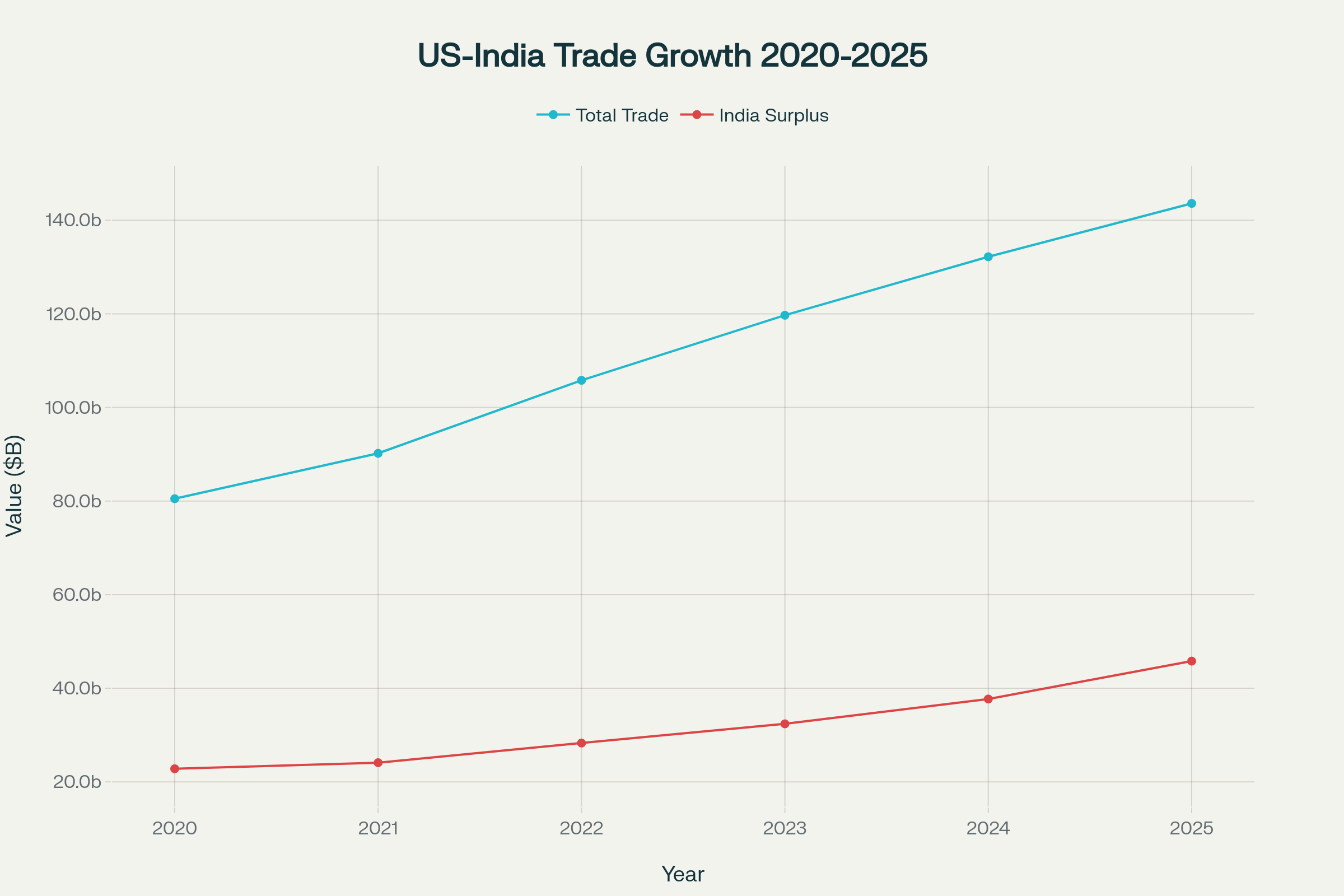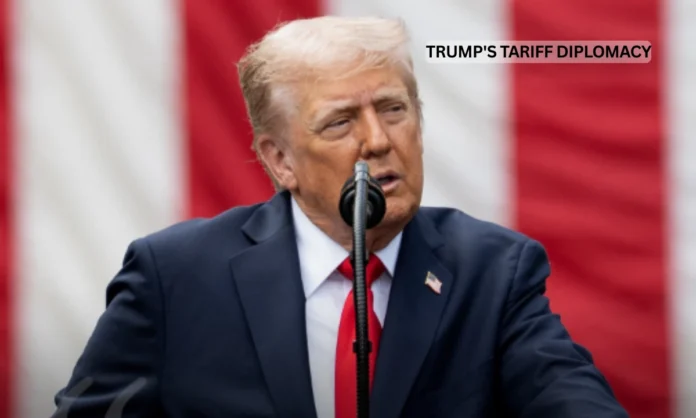Key Highlights
- Trump India Pakistan tariff threats escalated to 200% penalty warnings during May commencing Operation Sindoor crisis
- US imposed cumulative 50% tariffs on Indian goods following Trump India Pakistan tariff threats policy
- India categorically rejects mediation claims, maintaining direct military negotiations resolved conflict without external intervention
Opening Overview
President Donald Trump’s controversial Trump India Pakistan tariff threats have emerged as a defining element of his 2025 foreign policy approach, with the administration claiming these economic pressures resolved the May military crisis between the nuclear-armed neighbors. The Trump India Pakistan tariff threats strategy involved escalating warnings of “100 per cent, 150 per cent, and 200 per cent” duties to force ceasefire negotiations during Operation Sindoor, marking a unprecedented use of trade policy as diplomatic leverage. However, India’s Ministry of External Affairs categorically disputes any US mediation role, emphasizing that direct communications between military leadership of both nations achieved the ceasefire without third-party intervention.
The Trump India Pakistan tariff threats approach reflects broader shifts in US trade policy, with reciprocal tariff rates now affecting 57 countries and territories globally. Current US tariff structures place India at 26% rates while Pakistan faces 29% duties, positioning both South Asian nations among higher-taxed trading partners despite their strategic importance. The Trump India Pakistan tariff threats controversy coincides with record bilateral trade levels, as US-India commerce reached $143.6 billion in fiscal 2025, representing nearly 80% growth since 2020.
Economic Leverage Through Trump India Pakistan Tariff Threats
- May 2025 Operation Sindoor involved four days of missile and drone exchanges between nuclear neighbors
- US implemented 25% initial tariff on August 1, followed by additional 25% penalty on August 27
- Total bilateral trade between US-India reached record $143.6 billion in fiscal 2025
- India maintains $45.8 billion trade surplus with United States as of 2024-2025 data
The Trump India Pakistan tariff threats strategy materialized into concrete economic penalties throughout 2025, demonstrating the administration’s commitment to using trade leverage for diplomatic objectives. The President’s approach during Operation Sindoor involved direct communication with both nations’ leadership, threatening escalating tariff rates if military hostilities continued beyond specified timeframes. According to White House records, the Trump India Pakistan tariff threats included warnings of punitive duties reaching 200% on all bilateral trade if nuclear weapons deployment occurred.

US Tariff Rates by Country Under Trump’s Reciprocal Policy (2025)
The economic foundation underlying Trump India Pakistan tariff threats reflects substantial commercial relationships that provide leverage for diplomatic intervention. US-India bilateral trade has demonstrated consistent growth trajectory, increasing from $80.5 billion in 2020-21 to $143.6 billion in 2024-25, representing an annual compound growth rate exceeding 12%. This commercial interdependence strengthens the credibility of Trump India Pakistan tariff threats, as both nations maintain significant economic stakes in continued trade relationships.
Pakistan’s economic vulnerability amplifies the effectiveness of Trump India Pakistan tariff threats, particularly given the nation’s dependence on International Monetary Fund assistance and foreign loans. The country’s defense budget surge to $9 billion following Operation Sindoor reflects military spending increases of 20%, while overall government expenditure decreased by 7% to $62 billion. This fiscal constraint enhances the potential impact of Trump India Pakistan tariff threats on Pakistan’s already strained economic resources.
India’s trade surplus of $45.8 billion with the United States provides substantial economic exposure to potential Trump India Pakistan tariff threats implementation. The existing 50% cumulative tariff rate affects approximately 55% of India’s $87.3 billion in US-bound exports, demonstrating the tangible consequences of the administration’s economic pressure tactics. Strategic exemptions for pharmaceuticals, semiconductors, and critical minerals preserve essential supply chains while maintaining pressure through Trump India Pakistan tariff threats on other sectors.
India’s Strategic Response to Trump India Pakistan Tariff Threats
- External Affairs Ministry categorically denies US mediation claims during Operation Sindoor resolution
- Direct hotline communications between military commanders achieved ceasefire on May 10, 2025
- India maintains strategic autonomy in energy sourcing and defense procurement decisions
- Government implemented GST reductions on hundreds of products to offset tariff impacts
India’s comprehensive rejection of Trump India Pakistan tariff threats mediation claims reflects the nation’s commitment to strategic autonomy and bilateral relationship management. Ministry of External Affairs spokesperson Randhir Jaiswal emphasized during August 1, 2025 briefings that India’s ceasefire decision emerged from direct military consultations without external pressure, directly contradicting the effectiveness claims of Trump India Pakistan tariff threats. The government’s position maintains that Operation Sindoor cessation resulted from hotline communications between Directors General of Military Operations on both sides, not economic coercion.

US-India Bilateral Trade Growth and India’s Trade Surplus (2020-2025)
India’s economic response to Trump India Pakistan tariff threats includes domestic policy adjustments designed to mitigate trade disruption impacts. The government reduced Goods and Services Tax rates on hundreds of products in September 2025, increasing domestic consumption to offset potential export reductions from Trump India Pakistan tariff threats implementation. These measures demonstrate India’s proactive approach to maintaining economic stability despite external pressure tactics.
The diplomatic implications of Trump India Pakistan tariff threats extend beyond bilateral trade relationships to encompass broader strategic partnerships including the Quadrilateral Security Dialogue. India’s response emphasizes that comprehensive global strategic partnerships should not be subject to third-party relationship considerations, maintaining that Trump India Pakistan tariff threats represent inappropriate linkage of commercial and diplomatic issues. This position reflects India’s broader foreign policy approach of maintaining multiple partnerships while preserving decision-making autonomy.
Defense procurement decisions remain insulated from Trump India Pakistan tariff threats pressure, with the Defence Ministry clarifying that reports of paused US military purchases were “false and fabricated”. India’s defense modernization program allocated over half of the 2025-26 budget to equipment upgrades following Operation Sindoor, totaling approximately ₹1.80 lakh crore in capital expenditure. This sustained military investment demonstrates India’s commitment to security enhancement independent of Trump India Pakistan tariff threats considerations.
Regional Military Balance and Trump India Pakistan Tariff Threats Impact
- India’s 2025-26 defense budget reached $78.7 billion, representing 9.5% increase from previous year
- Pakistan increased military spending to $9 billion, marking 20% growth despite economic constraints
- Combined defense expenditure between both nations exceeds $87 billion annually
- Military modernization accelerated following May 2025 Operation Sindoor crisis
The military spending dynamics between India and Pakistan provide essential context for understanding Trump India Pakistan tariff threats effectiveness as diplomatic leverage. India’s defense allocation of $78.7 billion for fiscal 2025-26 represents nearly nine times Pakistan’s $9 billion military budget, creating substantial asymmetry that influences regional strategic calculations. This disparity enhances the potential impact of Trump India Pakistan tariff threats on Pakistan’s defense capabilities, particularly given economic constraints limiting military modernization programs.
Pakistan’s 20% defense budget increase following Operation Sindoor reflects the lasting impact of the May 2025 crisis, occurring despite overall government expenditure reductions of 7%. The military spending surge coincided with International Monetary Fund disbursement of approximately $1 billion under the Extended Fund Facility, highlighting Pakistan’s dependence on external financing that could be affected by Trump India Pakistan tariff threats. This economic vulnerability provides additional leverage for US diplomatic intervention through trade policy mechanisms.
India’s defense modernization program emphasizes capital expenditure allocations exceeding ₹1.80 lakh crore, focusing on equipment upgrades and capability enhancement following Operation Sindoor. The substantial investment in military technology and systems demonstrates India’s commitment to maintaining strategic superiority independent of Trump India Pakistan tariff threats pressure. This sustained defense spending reflects India’s long-term security planning that transcends immediate economic pressure tactics.
The regional arms buildup following Operation Sindoor creates additional stakes for Trump India Pakistan tariff threats implementation, as both nations seek to maintain competitive military capabilities. Pakistan’s strategic reliance on Chinese defense assistance and Indian partnerships with multiple suppliers create complex dynamics that economic pressure tactics must navigate. The effectiveness of Trump India Pakistan tariff threats depends partly on understanding these military procurement relationships and their vulnerabilities to trade disruption.
Global Trade Policy Context of Trump India Pakistan Tariff Threats
- US implemented reciprocal tariff policy affecting 57 countries and territories globally
- Average US tariff rate increased from 2.5% to 27% between January-April 2025
- Market volatility forced temporary pause of elevated tariffs above 10% baseline
- India faces 26% tariff rate while China encounters 34% duties under current policy
The Trump India Pakistan tariff threats strategy operates within broader global trade policy transformation that has elevated US tariff rates to century-high levels. The administration’s reciprocal tariff approach affects 57 countries and territories, with rates calculated based on bilateral trade deficits and perceived trade barriers. This comprehensive approach provides context for understanding Trump India Pakistan tariff threats as components of systematic trade policy restructuring rather than isolated diplomatic tools.
The April 2025 market crash following tariff announcements demonstrated the economic risks associated with Trump India Pakistan tariff threats implementation. The S&P 500 Index fell 4.88% while the Nasdaq Composite dropped 5.97%, forcing temporary suspension of elevated tariffs above 10% baseline rates. This market volatility illustrates the broader economic implications of Trump India Pakistan tariff threats and similar trade pressure tactics.
Current tariff structures position India’s 26% rate within the middle range of global penalties, while Pakistan faces 29% duties reflecting its bilateral trade deficit with the United States. Countries like Cambodia (49%), Vietnam (46%), and Lesotho (50%) encounter higher rates, while strategic partners including Brazil (10%) and the European Union (20%) receive more favorable treatment. This differential approach suggests that Trump India Pakistan tariff threats effectiveness depends on broader strategic relationship considerations.
The exemption categories for pharmaceuticals, semiconductors, energy resources, and critical minerals demonstrate selective application of Trump India Pakistan tariff threats pressure. These exclusions preserve essential supply chains while maintaining economic leverage in other sectors, reflecting sophisticated understanding of trade relationship vulnerabilities. The strategic nature of these exemptions enhances the credibility of Trump India Pakistan tariff threats by demonstrating willingness to use available economic tools.
Closing Assessment
The Trump India Pakistan tariff threats controversy highlights the evolving intersection of economic policy and diplomatic intervention in contemporary international relations. While President Trump continues asserting that 200% tariff warnings resolved the May 2025 Operation Sindoor crisis, India’s categorical rejection of mediation claims reflects broader tensions over sovereignty and strategic autonomy in bilateral relationship management. The effectiveness of Trump India Pakistan tariff threats as diplomatic tools remains contested, with economic leverage demonstrating both potential influence and significant limitations in resolving complex regional conflicts.
The implementation of actual tariff penalties following Trump India Pakistan tariff threats has created tangible economic consequences, with cumulative 50% duties affecting substantial portions of bilateral trade relationships. These measures demonstrate the administration’s commitment to using economic pressure as foreign policy instruments, while market volatility and policy modifications reveal the inherent risks of such approaches. As both South Asian nations navigate these economic pressures while maintaining their strategic objectives, the long-term effectiveness of Trump India Pakistan tariff threats will likely depend on broader geopolitical developments and evolving trade relationship dynamics.


